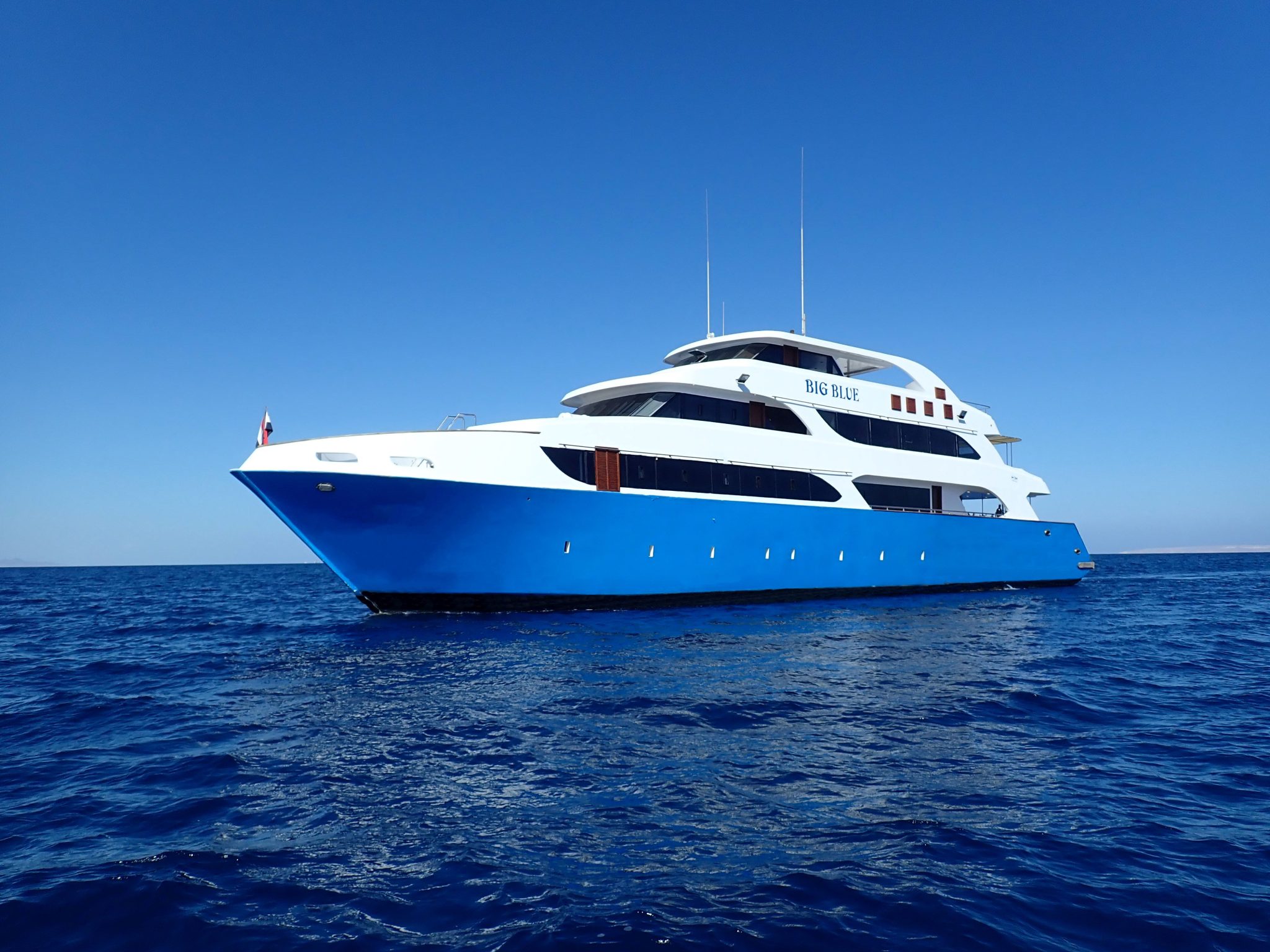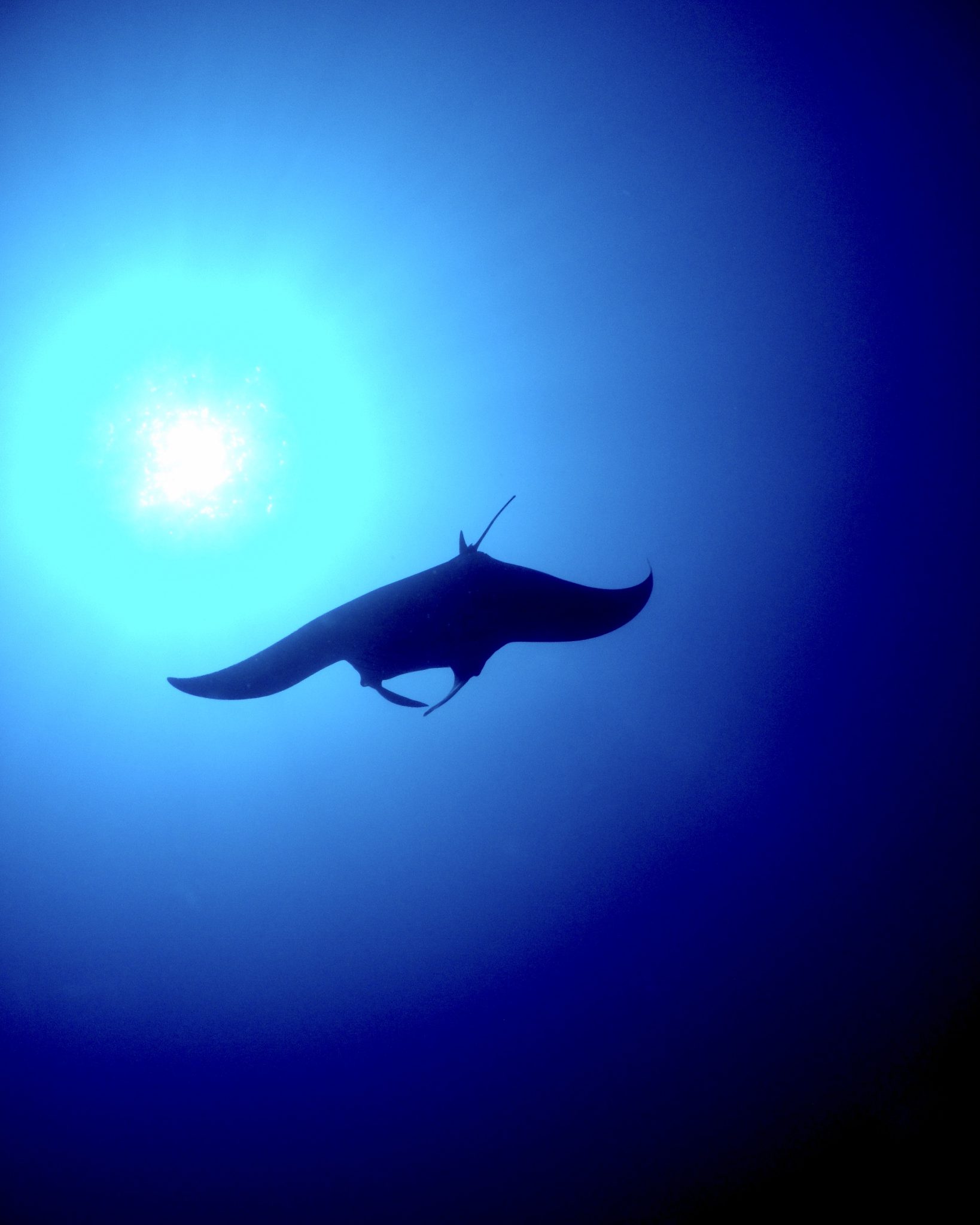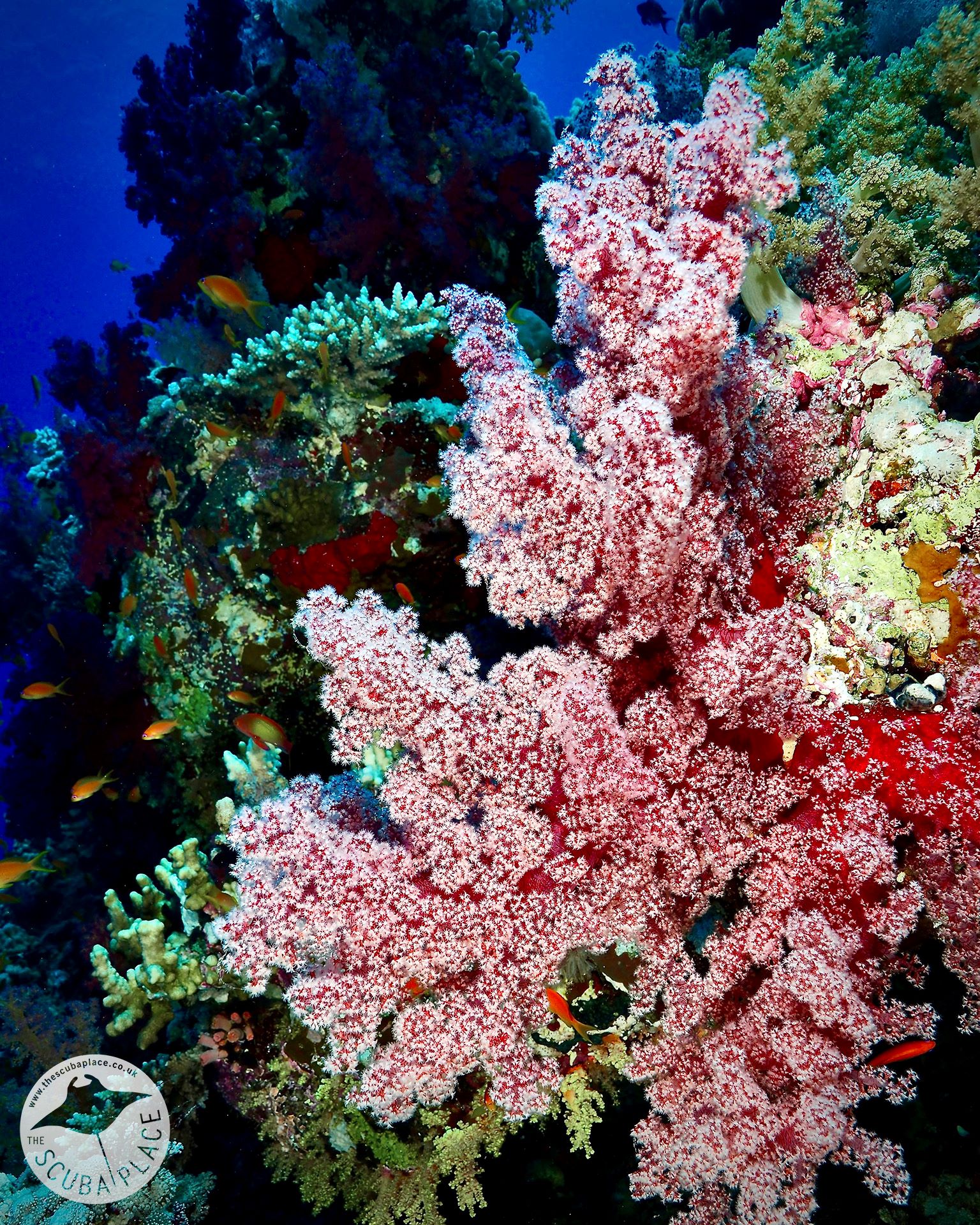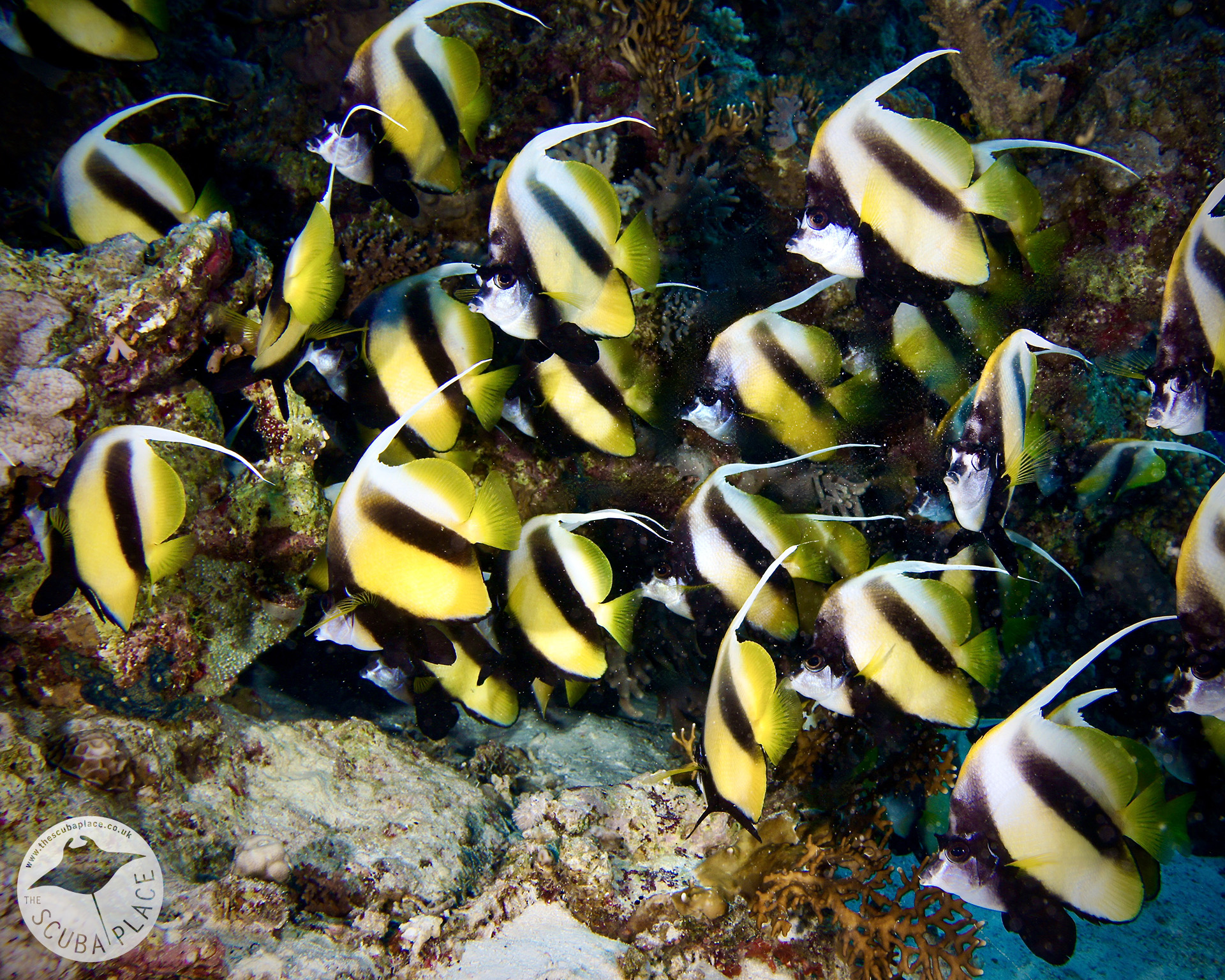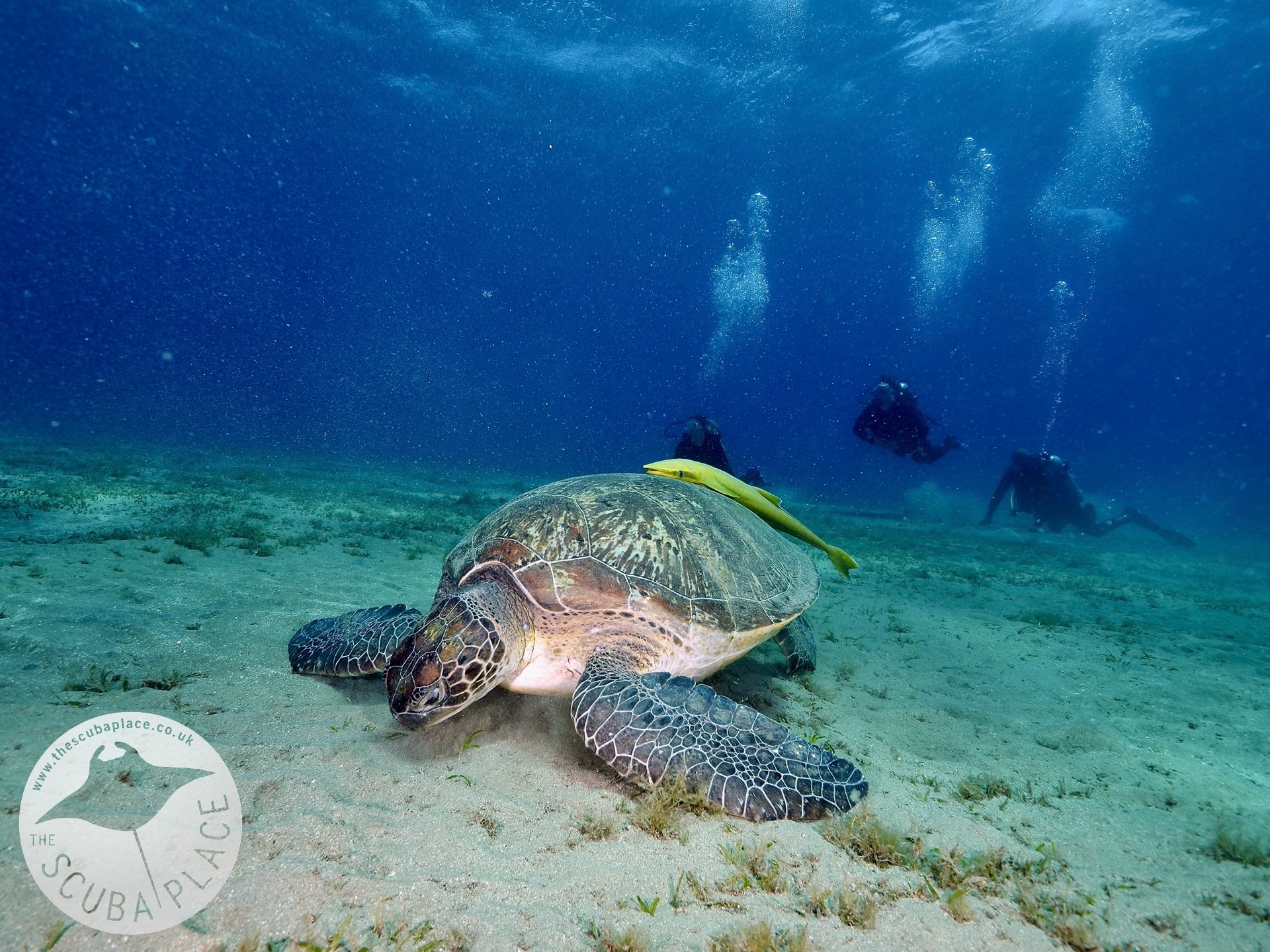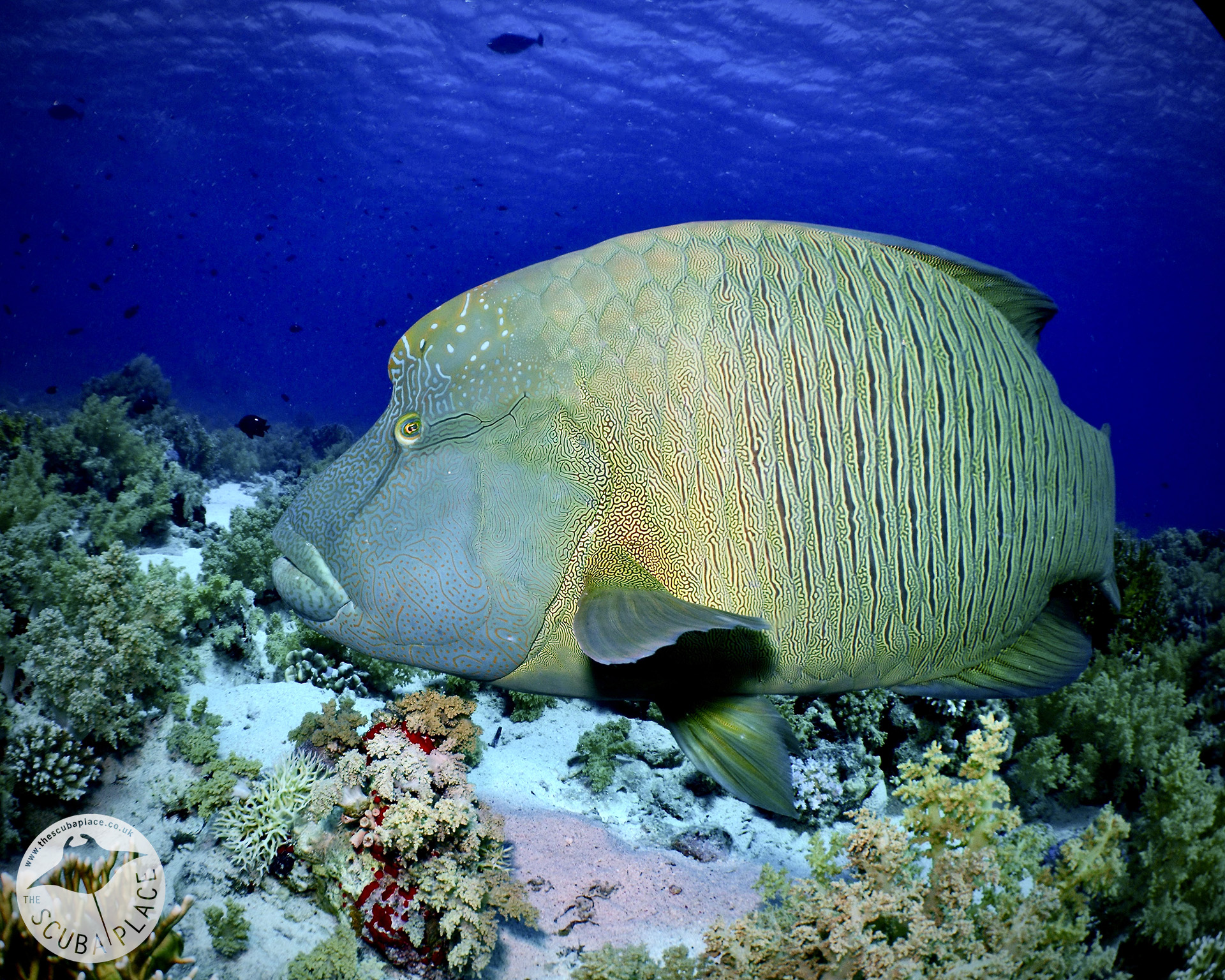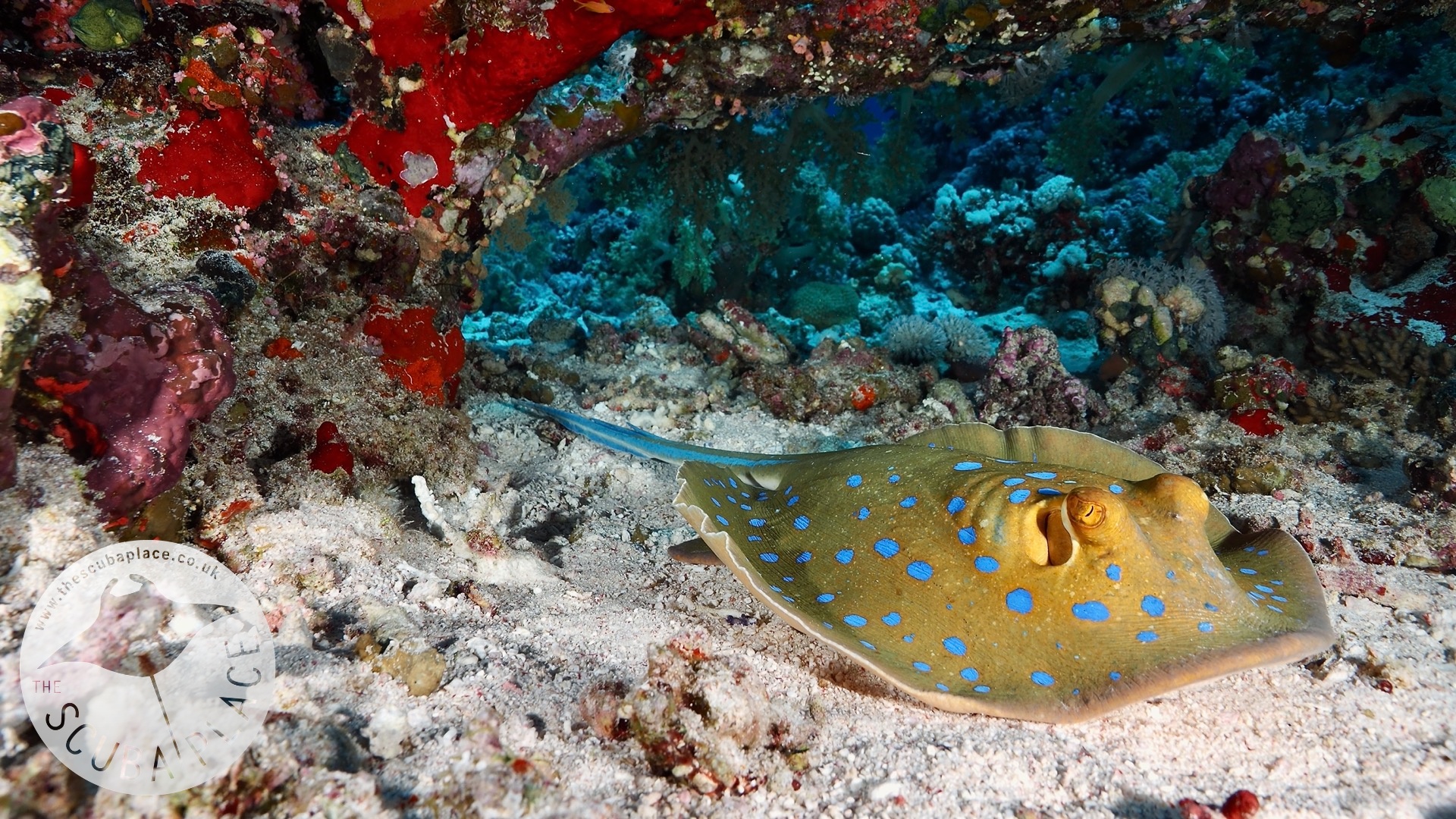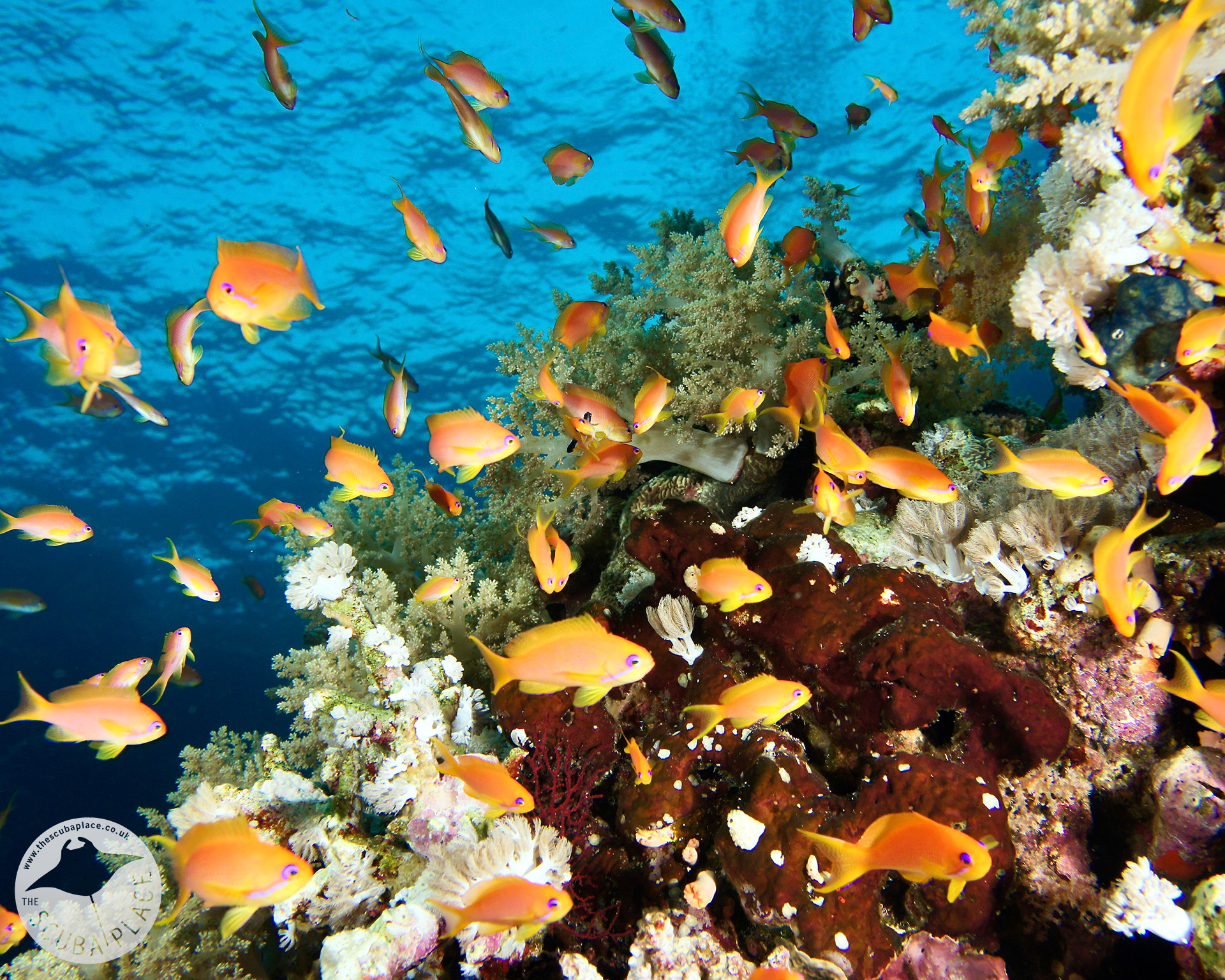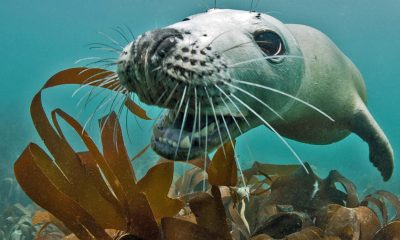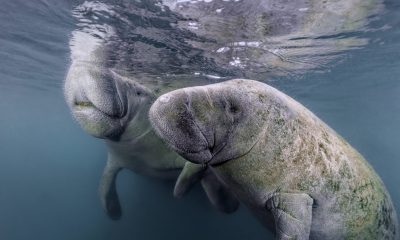News
Dive the Red Sea: Our Favourite Red Sea Safari Itinerary
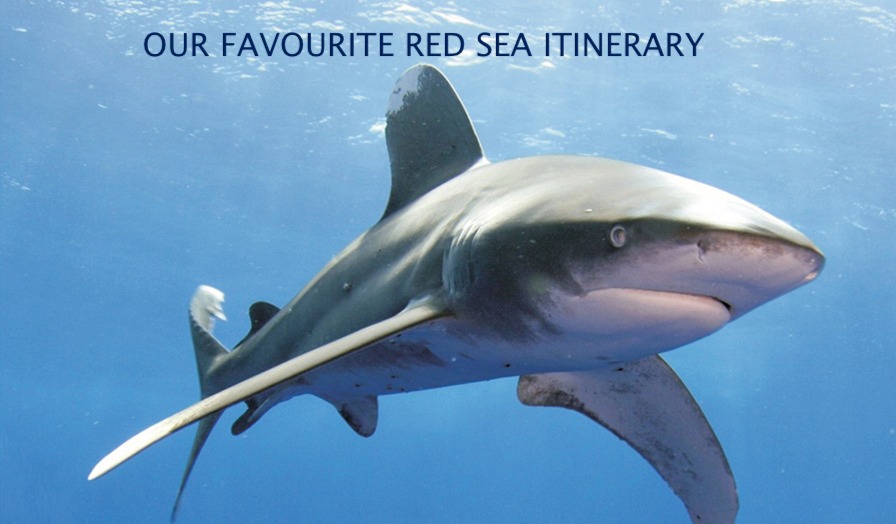
The Scuba Place talks about why the Deep South itinerary on Big Blue is their favourite Red Sea Safari…. Do you agree?
RED SEA WALL TO WALL, BDE or SIMPLY THE BEST? Whatever name you know this itinerary by, we can attest they all make perfect sense.
If you don’t know what I am talking about, then here is a guide to what I consider to be the very best liveaboard reef itinerary there is in the Red Sea. And I say reef deliberately so as not to confuse those who like all things rusty underwater – this is all about pretty things and fish, not hunks of metal! Although… there is a little bit of that too!
Some operators refer to this trip as “Simply the Best’, and I totally get that. Some call it simply Brothers, Daedalus and Elphinstone, and I can’t argue with that either. Some call it Red Sea – Wall to Wall, and that makes perfect sense too.
What is safe to say is, whatever you or they call it, this itinerary totally rocks!
There aren’t many divers across the globe who don’t know how good the Red Sea is, and we here in the UK are spoilt rotten by the fact that it is a mere 5 and a bit hours away. The resorts of Dahab, Sharm El Sheikh, Hurghada and Marsa Alam all offer really really good day boat diving, and the safaris are world class. The very best sites to dive are the offshore reefs where currents keep the corals super clean and healthy, and where the bigger animals come to feed and get cleaned – and the stars of these offshore reefs have to be The Brothers, Daedalus and Elphinstone.
Elphinstone is the only reef that is reachable by day boat – there are super-fast RIBS from Marsa Abu Dabbab that will make this trip, and day boats from Port Ghalib also make this trip, a journey that takes approximately 2 hours. But if more big reef diving is your preference, then the only way to do this is on a liveaboard safari.
Elphinstone itself is pretty spectacular. Sha’ab Abu Hamra, its proper name, is a reef that sits just below the surface some 6 and a half miles out to sea from Abu Dabbab. Bizarrely, for such a spectacular dive, the reef is a mere 300m long and some 20m wide at the surface. Running North to South, with steps down to 42 and 40m at either end, the reef ‘grows’ as you descend. Below the lowest steps, the reef drops into the abyss – and allegedly, no one knows how deep the drop-off actually goes!
It is, however, the depth of this reef that makes it so healthy and populated – the up currents bring food from the depths, making the reef at Elphinstone a super-sized dining table if you like. The corals are spectacular – big as can be, the brightest of bright and variety of colours, and marine life swarms the reef. The schools of anthias here are second to none, and bannerfish, parrot fish, damsels and surgeon fish add to the party. Sponges and beautiful soft corals fill your view as you look at the reef.
It is also super important to keep an eye on the blue too – barracuda, tuna and trevally sweep by constantly. Turtles and Napoleon wrasse are also often found here, and both mantas and whalesharks come by, but it is the sharks that really are the draw here. White tip and grey reef sharks are commonly seen, but the highlights here have to be the Longimanus – Oceanic Whitetip – and the hammerhead sharks.
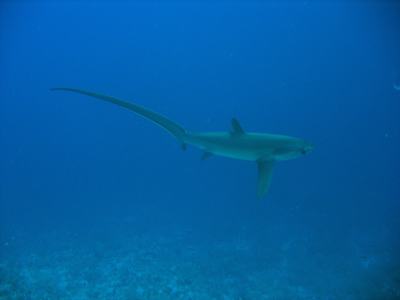 Our trip in May 2023 also delivered not one but two Thresher sharks on this dive site! We managed three drift dives – the expert zodiac crew dropping us off at the Northern point and meeting us at the Southern tip at the end of the dive on two of the three dives, letting us use the current to drift along at some speed and pop up an SMB at the end of the dive. Our third dive, the current had dropped to almost nothing, so we dropped down to the plateau at the southern end of the reef and hung around with a huge barracuda and a couple of Napoleon wrasse.
Our trip in May 2023 also delivered not one but two Thresher sharks on this dive site! We managed three drift dives – the expert zodiac crew dropping us off at the Northern point and meeting us at the Southern tip at the end of the dive on two of the three dives, letting us use the current to drift along at some speed and pop up an SMB at the end of the dive. Our third dive, the current had dropped to almost nothing, so we dropped down to the plateau at the southern end of the reef and hung around with a huge barracuda and a couple of Napoleon wrasse.
A good safari boat will give you a full day of diving here at Elphinstone, but it will be for one day at the beginning of the trip in all likelihood – there are no anchoring points here for overnight stays. An additional day might be available at the end of the trip if you are super unfortunate and the weather disrupts the other sites, but that isn’t that unlucky in my book
Next comes the dives at The Brothers. Big Brother and Little Brother sit approximately 35 miles off the mainland coast of Egypt – far enough to make them reachable only by safari boat. That is great news for divers on a liveaboard – no day boats! However, there can be lots of safari boats, but a good Captain and Dive Manager will work with the other boats to make sure there are as few divers as possible in the water at any time.
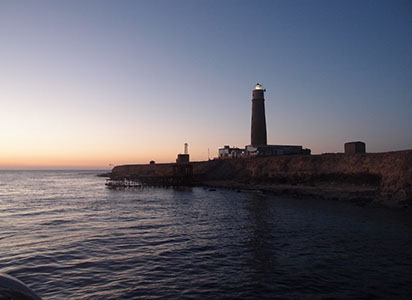 The local name for the Brothers is El Akhawein, and these two islands are reputed to be the very best dive destination in the Red Sea. They sit in a protected marine reserve, and like Elphinstone, there are no moorings here, so no night dives or overnight stays. Both islands are uninhabited, although there is an operational lighthouse on Big Brother.
The local name for the Brothers is El Akhawein, and these two islands are reputed to be the very best dive destination in the Red Sea. They sit in a protected marine reserve, and like Elphinstone, there are no moorings here, so no night dives or overnight stays. Both islands are uninhabited, although there is an operational lighthouse on Big Brother.
There are also two wrecks on Big Brother – the Aida which sits between 15 and 45 metres on the Western side of the island, and the Numidia, sitting between 10 and 85 metres deep on the Northern side. Both are excellent wrecks and have been down long enough to be overgrown with corals and inhabited by marine life.
The Numidia wreckage breaks up the reef nicely and we found numerous huge, bearded scorpion fish and a handful of nudibranchs sitting on its superstructure, pipefish and again, large Napoleon wrasse, but seeing another thresher shark, closely followed by a large manta ray, was the highlight for me.
We crammed in four dives here – one on Little Brother, and three on the big sibling. They were all totally amazing – this has to be my very favourite spot in the Red Sea. Straight to the point – manta ray, thresher shark, grey reef shark, turtles, hordes of schooling fish and the most stunning soft corals ever. Loved it, loved it, loved it!
It was then on to Daedalus Reef. I have tried to get here on several occasions in the past but got beaten by the weather and other circumstances, but this time, with now flat calm seas, I knew we were going to get there! A long overnight sail against the wind had us arrive at about 0500 and then it was down to some serious deep sleep before waking for a day of diving.
Daedalus Reef, also known as Abu Kizan, is a pinnacle with a man-made island and lighthouse sitting atop. It can be found c.50 miles out to sea, due east of Marsa Alam and slap bang in between Egypt and Saudi Arabia. Accessible only by liveaboard, this is a super-remote place and a protected marine park. This, combined with the flowing currents, make it incredibly populated and super-healthy.
Diving on the east side in the morning and the west side in the afternoon gives the very best light, and whilst we try to do this, all diving here is decided by the currents. The good news is, although no night dives are permitted, overnight stays are, and this means another day of diving is available! This was a no-brainer for us, the diving here is phenomenal.
As well as the now common abundance of incredible corals and reef inhabitants that we experienced on this trip, Daedalus is probably the best place in the Red Sea to see hammerhead sharks in big numbers, for they seem to school here. On this trip, we didn’t get to see schooling hammerheads, but we did get several individuals on each dive. We also saw another manta, plenty of trevally, a school of barracuda, a turtle or two and some of the healthiest corals ever. Other divers allegedly saw a whaleshark, but not us, sadly.
On top of that, the surface intervals here give you an opportunity to leave the safari boat and go on to the island, climb up the lighthouse where the views are amazing, and even buy a t-shirt from the ‘shop’ on the island.
I have dived the Red Sea for more than 15 years now, going at least twice a year, and that is a lot of diving. I love the amazing wrecks to the North, Rasmo and Tiran too, but honestly, for me, there is nothing like hitting these huge offshore reefs and experiencing their amazing offerings.
Thresher sharks? Mantas? Oceanic white tips? Hammerheads? Yes – and so much more – all in some of the healthiest and most beautiful coral environments there are.
Want to be blown away? Do this trip. Simply the Best works for me!
Our vessel for the week was the British-owned and operated Big Blue. At 42m, she is one of the larger boats in the fleet and sleeps up to 22 people, so there’s a lot of space on board. Smaller boats take more people, but we like space! We had twinset and sidemount divers with us, and no one was cramped on the dive deck. The food is great, and there is plenty of it; the crew are highly professional and fun, the air-conditioning works, and the cabins are plenty big enough. Beers are cheap, which helps, and mixers are free of charge should you bring some gin on board.
Big Blue does not mandate the number of dives you need to book a trip or set a minimum qualification other than Open Water (or equivalent), but what they do insist upon is that you have both a reel and SMB, and that you can use it properly. The check dive will involve everyone sending up an SMB, just to ensure a level of competence.
Key Facts :
- Getting there : EasyJet flies from Gatwick, Bristol and Manchester direct to Hurghada in just 5 hours. We were greeted by staff airside with our visa which is a great service! Saved us from queueing to purchase our visa. Once we had baggage in hand we loaded up for a quick 15 minutes to the marina.
- Air temperature : Varies from a low of 21°C in December January to 32°C in July August.
- Water temperature : 24-28°C. A 3-5mm full suit will suit most in the summer months.
- Visa requirement : for £30 we had a VIP visa service offered by Big Blue. We were met airside with our visa and avoided standing in the queue to purchase.
- Health protocols : You do not need to show a COVID vaccination certificate or negative COVID test to enter Egypt. Health officials may screen you for COVID symptoms on arrival. They may also randomly select travellers for rapid antigen testing.
- Currency : Egyptian pounds, Euros, British pounds are all accepted on board Big Blue.
- Electricity : 220V with 2 prong sockets. An extension lead is always a good idea.
- Internet and Wi-Fi : There is limited signal when out to sea. We did take along a dongle and purchased a sim card at the airport for £10 for 20G of data.
Price Guide: Expect from £1,650 per person with EasyJet flights based on two sharing a standard cabin for 7-night safari with NITROX included. Marine park and Port fees are also included but the Environmental tax of €70 will be collected on board. Bar bill and tips are extra.
Our Advice: If you haven’t been on Big Blue give it a try. It’s spacious and super comfortable and they have a relaxed attitude with an emphasis on diver safety. Half and full charters are available as well as individual spaces. We’d be happy to help your dive club charter a week!
Packing tips :
- Reef friendly sunscreen : The sun can be fierce on the water so come prepared!
- Reading material : Bring your Kindle loaded with a few books – remember wifi signal can be sketchy… or a few paperbacks… there’s a shelf in the salon for book sharing if you want to leave them behind.
And most importantly….
SMB and reel : and please make sure you know how to use it.
 The Scuba Place designs and builds custom scuba diving holidays. With personal knowledge and experience diving in many of our destinations, there is no one better to help build your dream dive holiday. Come Dive with Us!
The Scuba Place designs and builds custom scuba diving holidays. With personal knowledge and experience diving in many of our destinations, there is no one better to help build your dream dive holiday. Come Dive with Us!
Call us at 020 3515 9955 or email at reservations@thescubaplace.co.uk
Find us on
Facebook : https://www.facebook.com/thescubaplace
Instagram : https://www.instagram.com/the.scuba.place/
YouTube : https://www.youtube.com/channel/UCH684OdioYirI-zzdT58Ceg
Blogs
Wrecks’ Curse – The World of Wreck Diving
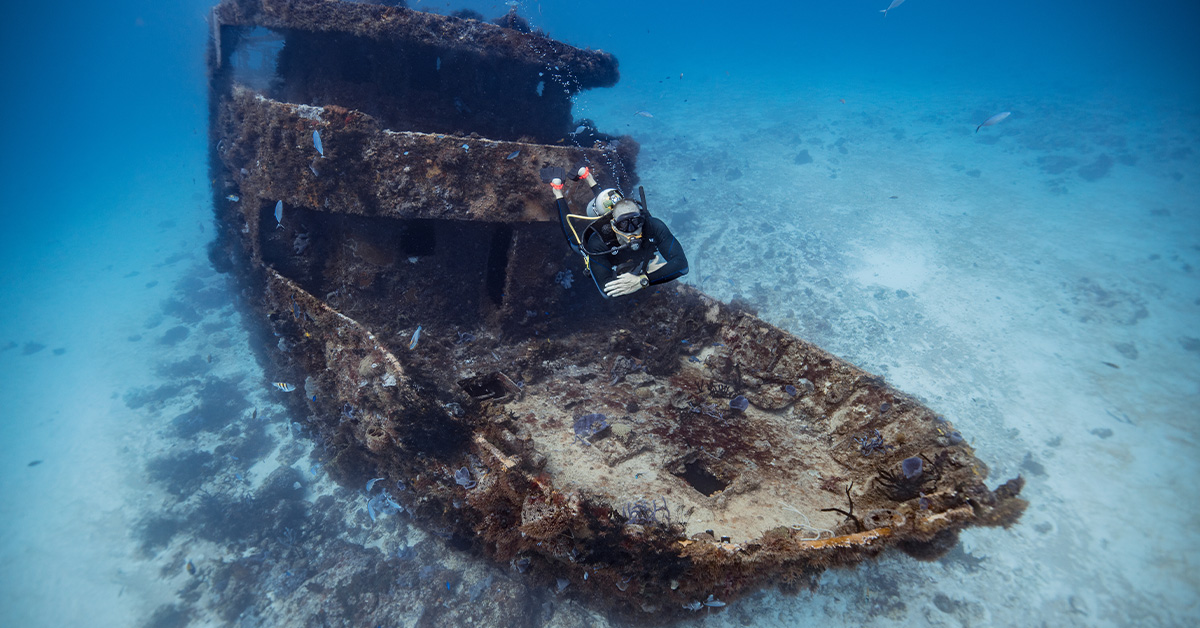
By Pablo Mir
We all enjoy those unexpected encounters that come with wreck diving, no matter how small, during our open water scuba dives. Exploring those nearly vanished remains of a ship scattered across the ocean floor is frequently the climax of the otherwise regular dive.
What is Wreck Diving?
Wreck diving involves exploring underwater shipwrecks while scuba diving. Sometimes, the wreck we encounter is more than just the remnants of a small and forgotten old vessel. Or perhaps we didn’t deliberately choose it, but the charter we boarded had that destination planned that day. The Benwood, less than 14 meters or 45 feet deep, in the clear waters of the National Marine Sanctuary in Key Largo, Florida, or the Copenhagen of Fort Lauderdale, also Florida, are good examples. Divers, many beginners who haven’t even devoted half a second to thinking about wreck diving, enjoy exploring their remains and the fauna that inhabit them. In some way, and at different levels, we all seem to potentially be wreck divers, even without a higher and explicit intention.
First Encounters: The Unplanned Dive into Wreck Exploration
But the trek is long and has many branches. Wrecks present themselves in vast possibilities, from shallow and clear waters to deep and dark ones. The Ancient Mariner, Captain Dan, U352, Great Isaac, Grecian, Lady Luck, Hyde, Aeolus, Hydro Atlantic, RBJ & CC, Algol, U869, and the Andrea Doria -the Grand Dame of the Sea- are some of the names that resonate among thousands in the minds of many wreck divers on the East Coast of the USA. For many of us, getting ready to traverse that path of increasing challenges, increasingly demanding environments, and more astonishing, transcendent dives is a life goal in terms of recreation.
A Diverse World: The Spectrum of Wreck Diving Experiences
Now, it is well known that the label of wreck diving is not only applied to shipwrecks. It is common to extend it to any artificial structure or piece of it that can be explored during our dives. For example, Texas Tower #4, an Air Force radar station off the coast of New Jersey, toppled in 1961 by a storm, is frequently visited by numerous local technical divers and visitors who want to test their skills in those demanding waters. Similar structures of different natures and purposes exist in many other places, with the most different levels of certification and experience requirements we can imagine.
Is Wreck Diving Dangerous?
Wreck diving is not inherently dangerous, but proper training is required. Describing with words the feeling of wonder and the adventure involved in wreck diving is not easy. In the same way that regular open water diving is the entry point to another world, a unique, fascinating world, wreck diving is also an entry point to one of the additional levels of enjoyment and fascination the world of recreational diving poses. Wreck diving, we live the adventures others just dream or fear. We are there, explorers of a distant land. Often, we witness the remains of real human tragedies; other times, we are visitors to the most wonderful amusement park we can imagine.
Learning Curve: The Path from Novice to Experienced Wreck Diver
Sometimes, watching groups of recreational divers exploring a wreck might seem like witnessing a scene from a pirate movie. Two or three divers here, two or three more there, ascending and descending along its sides, from bow to stern, sticking their heads in to look inside compartments and passages. In some cases, entering and exiting the bridge or any space allows penetration in areas with abundant natural light and generous access points. Their expressions and body language make it easy to notice that they are having a great time. There is no doubt they are enjoying it, and it will be an experience they will vividly remember.
If they are a group traveling together, an instructor or divemaster may be there to ensure everything goes well. The passion for exploration, for discovery, and that thirst for adventures we all have within us can sometimes hinder us in making our best decisions. Therefore, to become actual wreck divers, we must not only desire to do so but also have the will to learn and gain experience, slowly and safely, in everything this specialty implies. While it is true that exploring the exterior of a wreck may seem like something that doesn’t require specific training, the reality is that it does. Fishing lines, sharp surfaces, parts that can easily come off, suddenly disappearing visibility, disorientation, etc., are dangers we must have learned about, developed strategies to avoid, and implemented procedures to solve with the proper tools.
And so it will be; many will traverse the paths of wreck diving by starting with proper training. Sometimes, the first step is part of the regular advanced diver certification many divers take; other times, it is going straight for a wreck diving specialty. They will learn and start practicing, gaining experience and ease in their procedures. They will fall more and more in love with those twisted iron environments and proudly display the rust stains on their diving suits as if they were scars from a well-fought battle.
Deepening the Dive: Advanced Wreck Exploration Techniques
But the journey continues. Sooner or later, some will want more than just hovering around the wrecks. Crossing well-lit passages with the exit in sight will no longer be enough for them. What they recently may have told themselves they wouldn’t do will begin to intrigue them, and they will want to continue training “just in case.” They will want to start moving away from those open corridors and see with their own eyes what lies beyond. They will no longer see wrecks as enemies to overwhelm in large groups but as a mystery to unravel slowly, passage by passage, room by room. They will split into small groups. They pursue a specific goal, have a specific plan, and seek to minimize unexpected situations, and this is more controllable and achievable when done by two or three rather than four or five.
They will keep learning, venture through narrow passages, dodge cables and pieces of metal hanging from what is now the ceiling, and proceed cautiously to avoid stirring up sediments. They will use different methods to establish positions at crossroads, place strobe lights, carry multiple penetration reels, and carry substantial knives, the kind they used to laugh at not long ago, thinking they were unnecessary exaggerations.
The Wreck Diver’s Journey: A Path of Endless Discovery
Over time, they will penetrate deeper and deeper into larger, darker, gloomier, more frightening wreck structures, simply because they can. They will descend to greater depths because that’s where they are in better condition and farther away from the boarding hordes.
They will transition from Air to Nitrox, later return to Air, and later delve into the world of Trimix. They will start planning and executing dives with decompression stops, as otherwise, their bottom times will be insufficient for their intentions. From one decompression gas cylinder, they will move to two, and in some cases, three or more. Those who can afford it will buy rebreathers; those who can’t will stick to open circuit, carrying multiple large cylinders.
The Eternal Call of the Deep
But genuine amazement will hit them hard on the day they, thinking carefully about all the steps they have taken and accounting for the time and effort dedicated, conclude without a shadow of a doubt that it was worth it. It will be too late for them; they will have fallen victim to this curse of shipwrecks that has trapped so many. There will be no escape for them; from now on, they will be wreck divers without cure or remedy. They will be condemned to spend the rest of their vacations and days off among twisted irons at the bottom of rivers, lakes, and oceans. Cheers buddies! And a warm welcome to all those newcomers to recreational diving who, unknowingly, may be destined to wander among old wood and rusted metal, seeking to put out that thirst for real-life adventures.
To find out more about International Training, visit www.tdisdi.com.
Main Image: William Drumm/International Training
Blogs
Seal Encounter Dives at Lundy Island
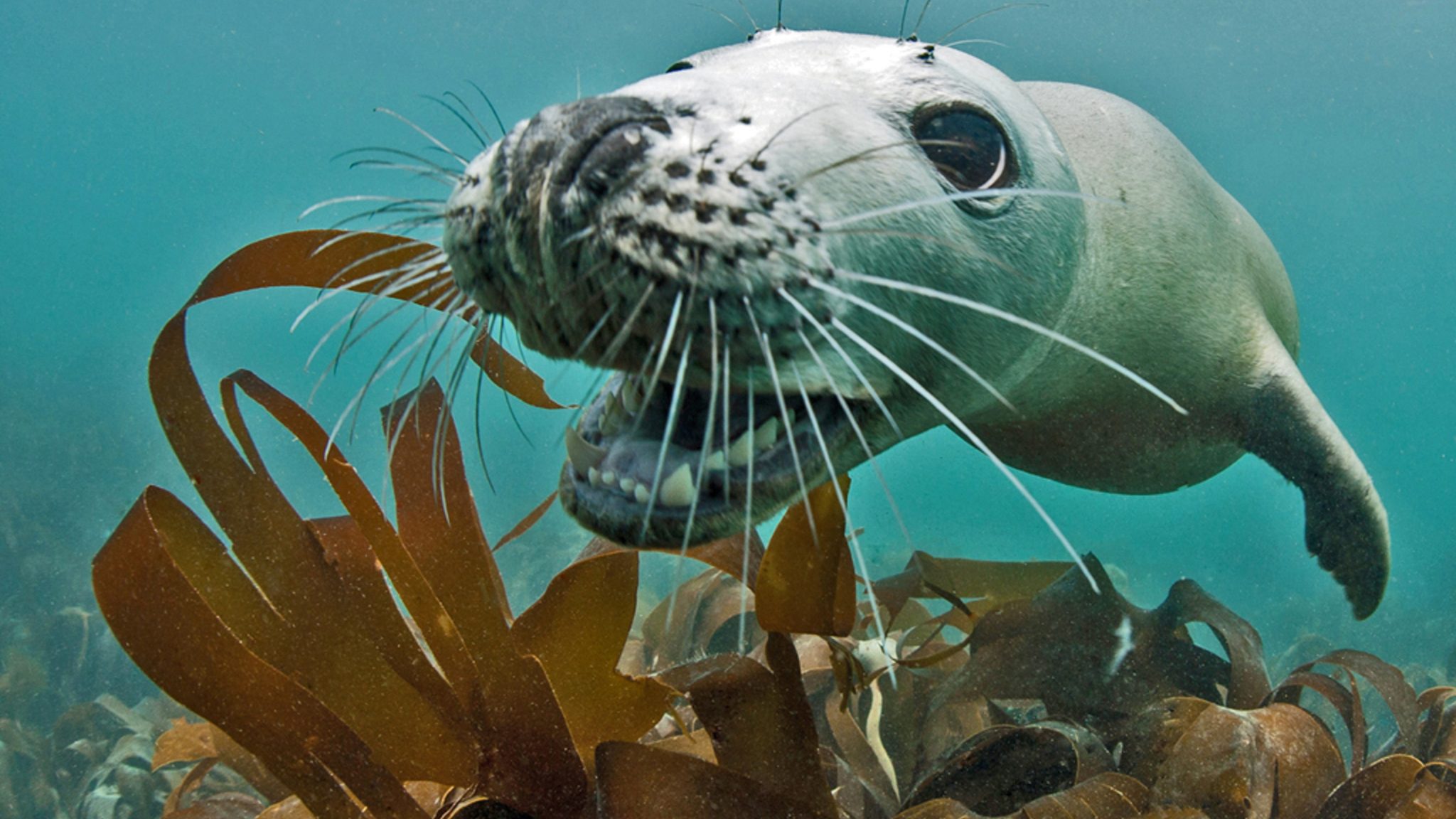
Voted No. 3 on the Top 10 Ultimate British Isles Bucket List by The Independent, these dives offer the closest marine mammal encounter available to divers in the UK. Friendly and playful, respectful divers are often rewarded by incredible interaction with the Lundy Seals.
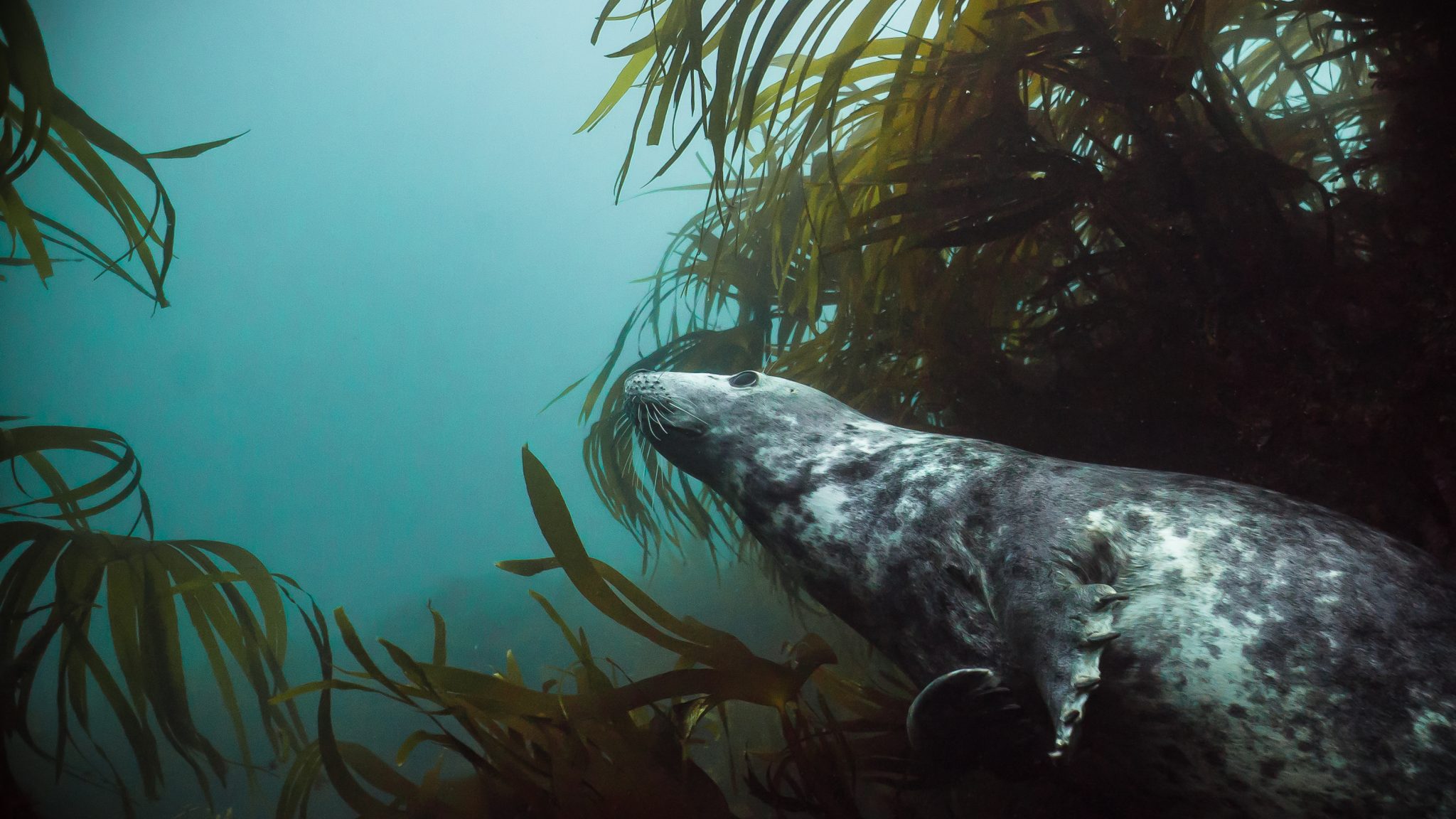
Easy Divers has been running guided dive trips to Lundy for nearly 10 years and offers dive equipment hire if required. Trips depart from the stunning harbour town of Ilfracombe in North Devon and Dolphins are often seen during the boat passage.
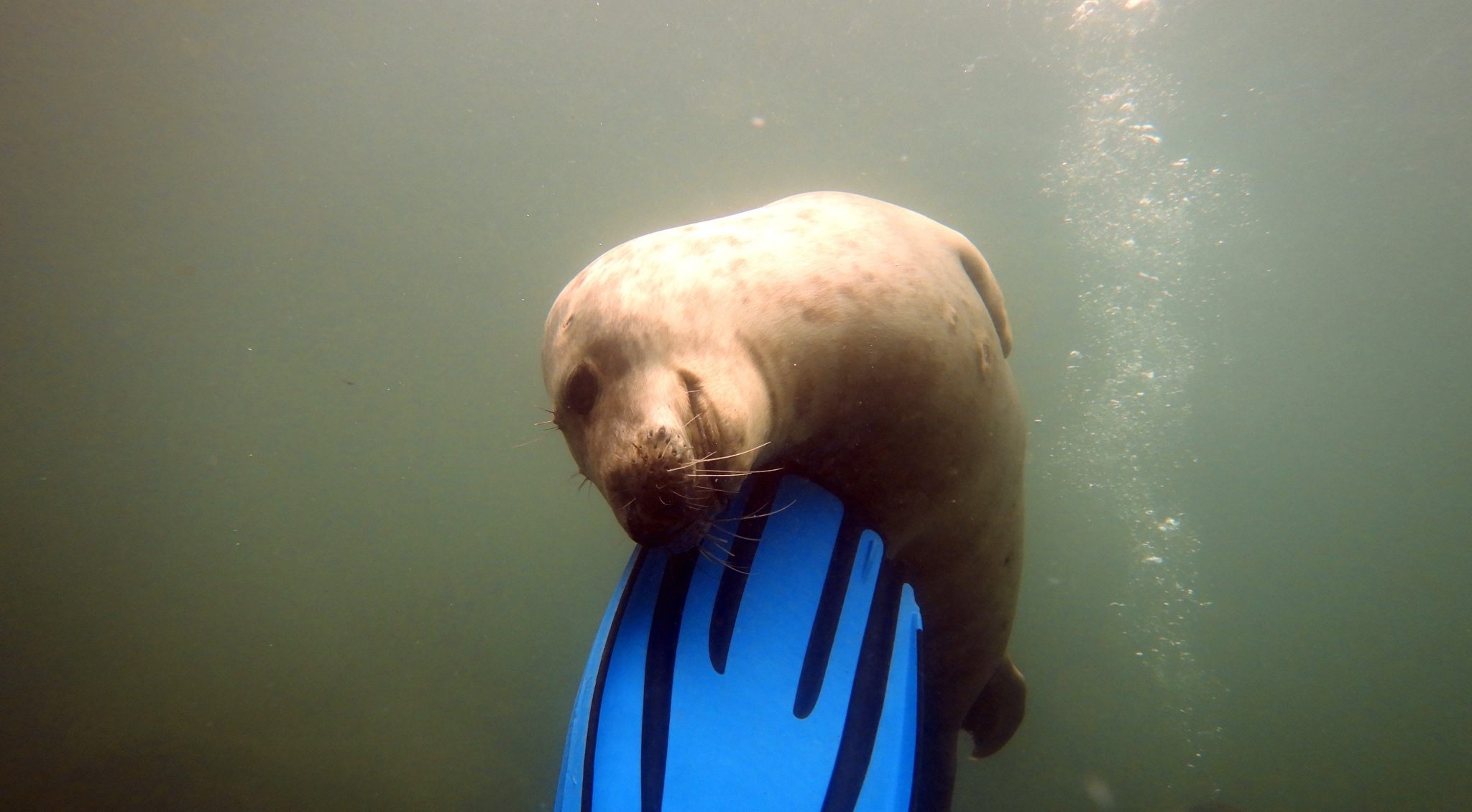
In addition to diving, Ilfracombe is a great base from which to hike the South West Coast Path, dip into surfing at the UK’s first World Surf reserve, enjoy other water sports or head to Exmoor National Park.
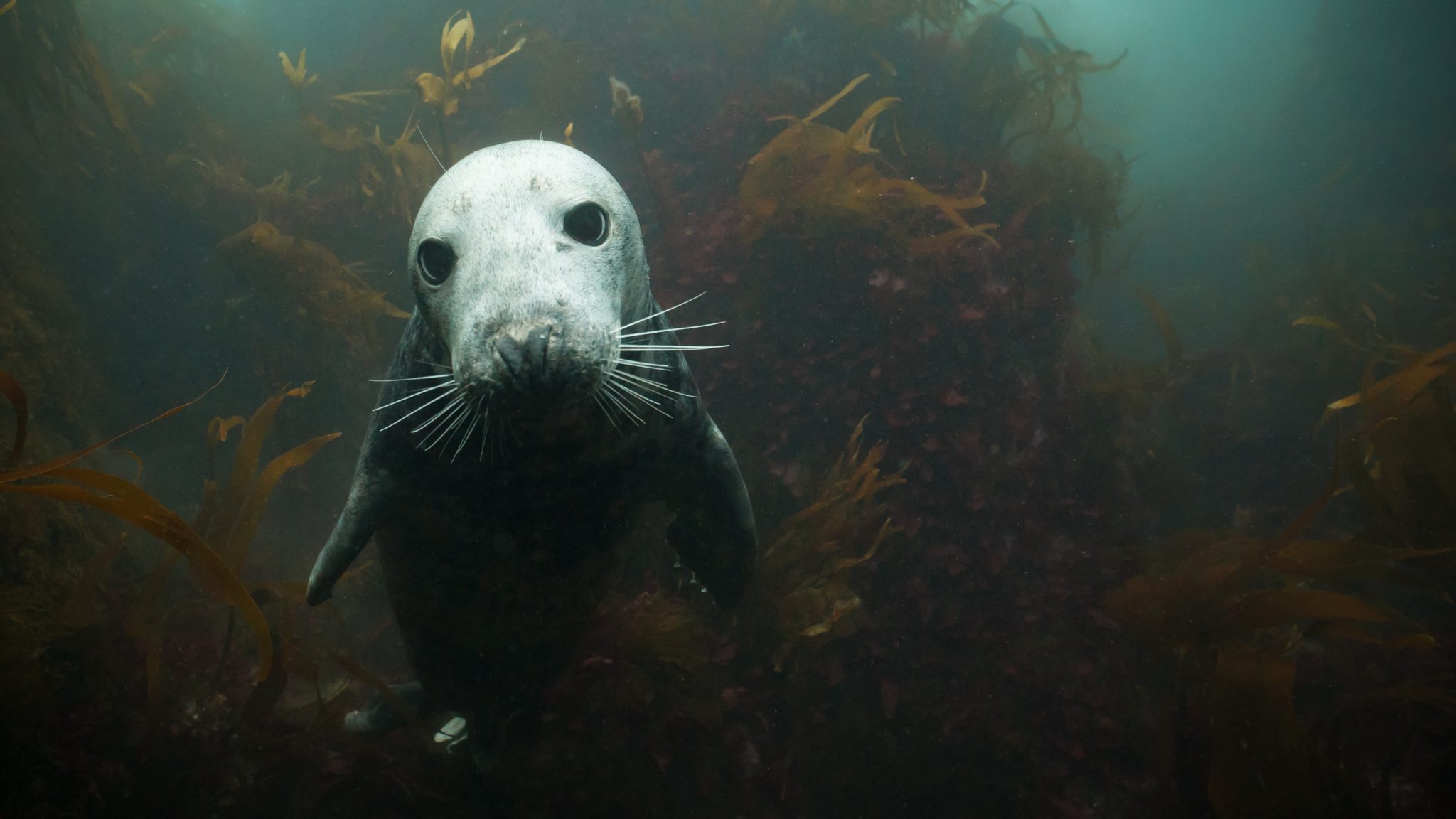
Easy Divers also runs a diver-friendly guest house, with a discount for diving customers and kit rinsing and drying facilities.
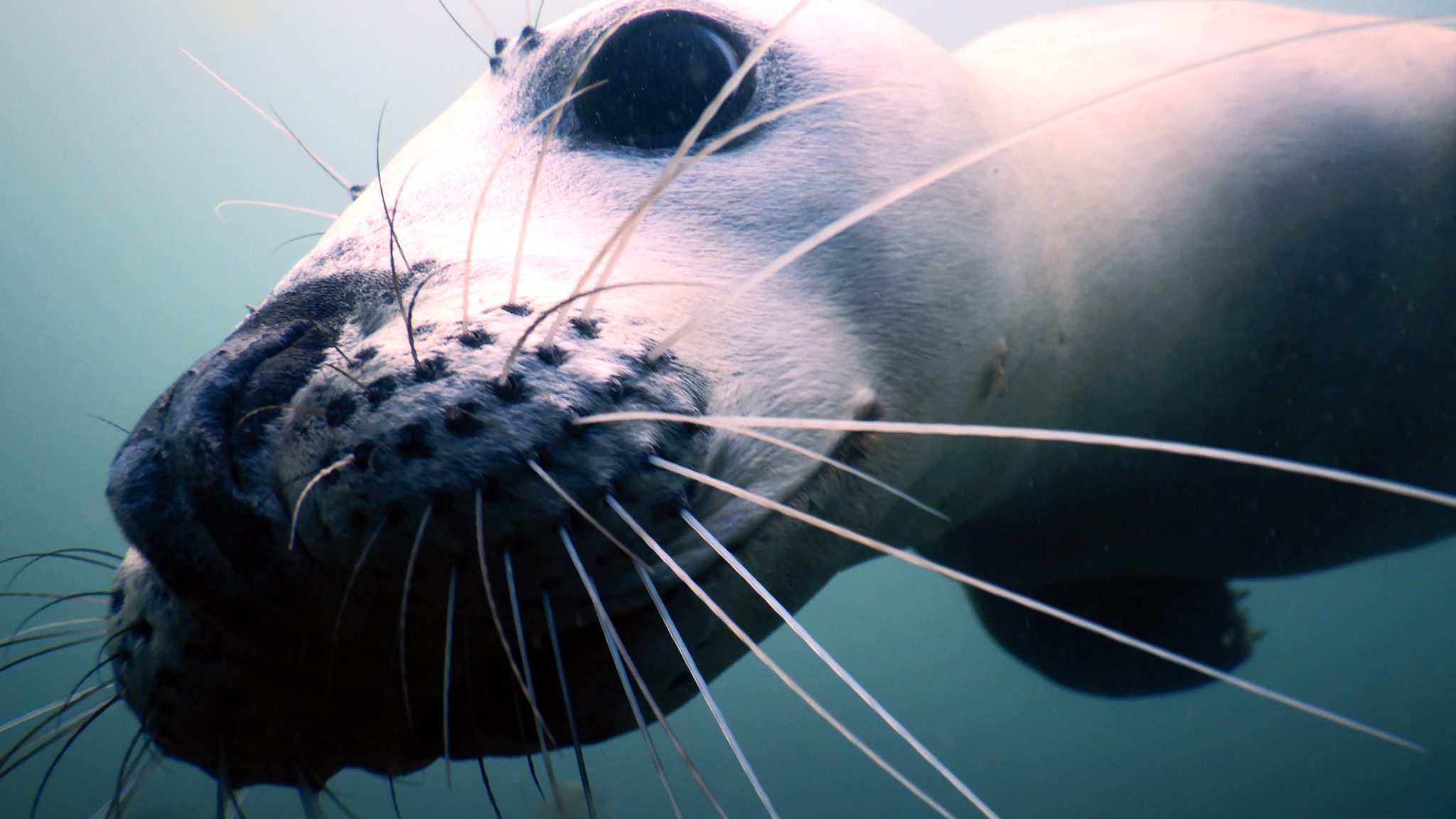
The Seal encounter dive sites are shallow and sheltered and are suitable for divers of all levels, making them a great introduction to British diving.
Exclusive Offer for Scubaverse Subscribers
Use your exclusive Scubaverse discount code scubaverse10% before the end of June and join us for a Seal encounter dive trip to Lundy Island, on any trip date with availability this Summer. Visit https://www.easydiversnorthdevon.co.uk/lundy-dive-trips/seal-encounter-dive-trips/ and enter code scubaverse10% at the on-line check out.
Trips book out well ahead, so book now to avoid disappointment. To save 10% on any 1 night stay at our guest house, please call 07833 020424. We offer free cancellation for divers who book a 1 night stay, if we have to re-schedule due to unsafe weather.
Join us for Britain’s best marine mammal diving experience!
Trips run from end of May to mid-October and are bookable via email at info@easydiversnorthdevon.co.uk, on-line via the Easy Divers website, www.easydiversnorthdevon.co.uk, or call 07833 020424 for more info
-

 Gear Reviews4 weeks ago
Gear Reviews4 weeks agoGEAR REVIEW – Revolutionising Diving Comfort: The Sharkskin T2 Chillproof Suit
-

 Marine Life & Conservation Blogs3 months ago
Marine Life & Conservation Blogs3 months agoCreature Feature: Swell Sharks
-

 Blogs2 months ago
Blogs2 months agoMurex Resorts: Passport to Paradise!
-

 Blogs3 months ago
Blogs3 months agoDiver Discovering Whale Skeletons Beneath Ice Judged World’s Best Underwater Photograph
-

 News3 months ago
News3 months agoPADI Teams Up with Wellness Brand Neuro to Drive Ocean Change and Create a Blue State of Mind
-

 Marine Life & Conservation3 months ago
Marine Life & Conservation3 months agoSave the Manatee Club launches brand new webcams at Silver Springs State Park, Florida
-

 Blogs2 months ago
Blogs2 months agoSeagrass Awareness Month brings critical food source for Manatees to centre stage
-

 Blogs2 months ago
Blogs2 months agoSOMABAY: Scubaverse interviews Wolfgang Clausen, General Manager, ORCA Dive Clubs


